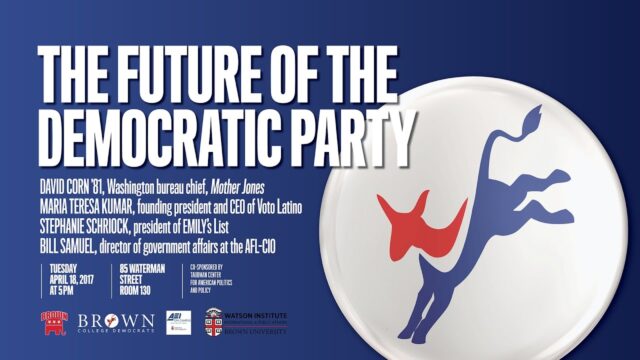What’s the Future of the Democratic Party in the USA?
The Democratic Party’s Current Standing
The Democratic Party, one of the two major political parties in the United States, is currently in a period of change and reflection. After Joe Biden’s election as president in 2020, the party faced both victories and challenges. The Biden administration made efforts to pass major legislation, like the American Rescue Plan and the Infrastructure Investment and Jobs Act, showing the party’s focus on addressing economic recovery, job creation, and public health.
However, the party’s internal dynamics are more complex. The Democratic base consists of a diverse coalition of voters, including progressive liberals, moderate centrists, working-class individuals, and minority communities. Balancing the interests of these different groups has always been a challenge for the party. While they stand united on key issues like climate change, healthcare reform, and racial justice, there are disagreements on how progressive their policies should be.
The party’s current standing reflects a need to connect with younger voters and ensure they stay energized. This demographic is crucial for the party’s future, as they tend to support progressive policies such as student loan forgiveness, universal healthcare, and climate action. The Democratic Party needs to keep the enthusiasm of its progressive wing while appealing to moderates and independents, especially in battleground states.
Internal Tensions: Progressives vs. Moderates
One of the biggest questions facing the Democratic Party is how it will handle the growing divide between its progressive and moderate factions. Progressives, like Bernie Sanders and Alexandria Ocasio-Cortez, push for bold reforms like Medicare for All, the Green New Deal, and free college education. They argue that the party should fully embrace its role as a champion for working people, marginalized communities, and environmental sustainability.
Moderates, on the other hand, take a more cautious approach. Leaders like Joe Biden, Kamala Harris, and Pete Buttigieg advocate for gradual changes that appeal to a broader range of voters, including centrists and independents. They argue that a too-radical agenda could alienate swing voters and cause the party to lose elections in critical districts or states.
The tension between these two wings has been a recurring issue. In the 2020 Democratic primaries, this divide was visible, as Sanders and Biden represented different visions for the party’s future. Although Biden won the nomination, the question remains whether the party can maintain a united front in the long term. Progressives want the party to move faster on issues like climate change and wealth inequality, while moderates fear that too much change, too quickly, could harm the party’s electoral prospects.
The Role of Identity Politics

The Democratic Party is known for its support of civil rights and equality for all, which has made it the home for a variety of minority groups, including African Americans, Latinos, the LGBTQ+ community, and women. However, there is an ongoing debate within the party about the role of identity politics—politics that focus on specific groups based on race, gender, or sexual orientation.
Some Democrats believe that the party must continue to champion the rights of marginalized communities, as this aligns with their core values of equality and justice. They argue that addressing systemic racism, sexism, and discrimination is not only the right thing to do but also energizes a significant part of the Democratic base. Candidates like Kamala Harris, Cory Booker, and Ilhan Omar have become symbols of this commitment to diversity and inclusion.
However, critics within the party worry that too much focus on identity politics may alienate white working-class voters, particularly in rural areas and the Midwest. These voters were once a core part of the Democratic coalition but have increasingly moved towards the Republican Party. If the Democratic Party wants to expand its reach, it may need to find a way to balance its focus on social justice issues with policies that address economic concerns affecting a broader swath of the population.
Challenges in Rural America
One of the significant challenges facing the Democratic Party is how to reconnect with voters in rural America. Over the past few decades, rural areas have become strongholds for the Republican Party, with many voters feeling that Democrats are out of touch with their values and concerns. Economic hardships, job losses, and the decline of traditional industries like manufacturing and coal mining have contributed to a sense of alienation in these communities.
To improve its prospects in rural America, the Democratic Party needs to focus on policies that directly address the needs of these voters. This could include investing in infrastructure, expanding access to healthcare, and creating new job opportunities in industries like clean energy. The party must also work on improving its messaging in these areas, emphasizing that their policies will benefit all Americans, regardless of where they live.
Reaching rural voters will be crucial for the party’s future, especially in battleground states like Wisconsin, Pennsylvania, and Michigan, where small margins can decide the outcome of elections. While Democrats have made some progress in urban and suburban areas, neglecting rural voters could hurt their chances in future elections.
Demographics and the Youth Vote
The future of the Democratic Party also depends on demographics, particularly how it engages with young voters. Millennials and Generation Z are more diverse, socially liberal, and progressive than older generations. They tend to support issues like climate action, LGBTQ+ rights, racial justice, and student loan forgiveness—policies that align with the more progressive wing of the Democratic Party.
However, young voters are also known for their lower turnout rates in elections. While they overwhelmingly supported Biden in the 2020 election, the party cannot take their votes for granted. Democrats need to actively engage with young people, addressing their concerns and giving them reasons to vote in every election, not just presidential ones.
Social media, grassroots organizing, and youth-led movements have become powerful tools for political engagement. The Democratic Party must continue to embrace these platforms and methods to keep young voters energized and involved. Addressing issues like climate change, economic inequality, and education reform will be key to keeping young voters on the side of the Democrats.
Future Leadership and 2024 Prospects
Looking ahead, the Democratic Party’s leadership will play a crucial role in shaping its future. Joe Biden’s age and potential retirement from politics after his presidency have raised questions about who will lead the party in the years to come. Vice President Kamala Harris, Senator Elizabeth Warren, and Transportation Secretary Pete Buttigieg are often mentioned as potential candidates for the 2024 election or beyond.
The party’s future leadership will need to navigate the ongoing tensions between progressives and moderates while ensuring that the party remains competitive in key states. They will also need to address the challenges of identity politics, rural outreach, and youth engagement.
The 2024 presidential election will be a critical test for the Democratic Party. If they can unite their base, address the concerns of key voting blocs, and present a clear vision for the future, they have the potential to remain a dominant force in American politics. However, if internal divisions continue to grow, the party may struggle to maintain its current standing.
Conclusion
The future of the Democratic Party in the USA is filled with both opportunities and challenges. Balancing the needs of different voter groups, addressing internal tensions, and focusing on key issues like economic inequality, climate change, and social justice will be essential. The party’s ability to engage with rural voters, youth, and minority groups will also shape its future. The coming years will determine whether the Democratic Party can adapt and thrive in an evolving political landscape.










